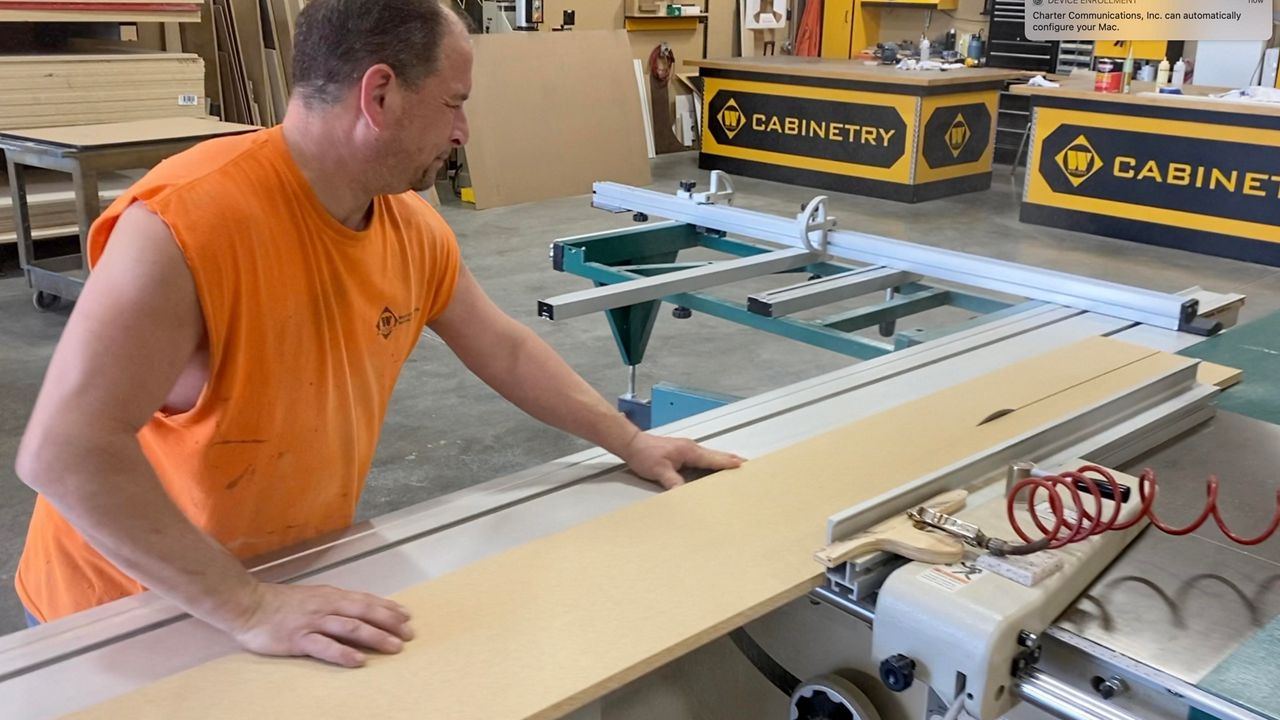FLORENCE, Ky. — Anyone who’s tried their hand at a DIY project around the house projects during the pandemic has probably noticed the cost of wood at hardware stores has been way higher than pre-pandemic times.
The same goes for house prices for anyone trying to buy a home.
There’s a connection, but the lumber prices might finally be starting to come down.
Contractor Randy Reno has loathed seeing the price tags on lumber during his trip to hardware stores for supplies.

“I just bought some treated 2x4s for a job down in Warsaw, and they were $10.46 a piece. Before they used to be about $3,” he said. “A lot of them don’t have the material. They don’t have it in stock, so you have to wait, preorder.”
NKU economist Abdullah Al Bahrani said 1,000 feet of wood board would normally cost about $200 to $400, but has soared to as high as $1,600 to $1,700 dollars.
Al Bahrani said the pandemic was a “perfect storm” of events to lead to the high prices.
During the pandemic there were less people working, thus a decrease in supply. That coincided with an increase in demand.
“Because we’re all stuck at home, we thought about all the projects that we should be doing at home, and demand for lumber increased drastically,” Al Bahrani said.
Supply chain and logistics also took a big hit, making lumber more costly to move.
Paying a little more for 2x4s may not be so bad when someone just needs a few, but it’s a lot different when they need thousands.
Reno’s company Wright Contracting builds commercial buildings in Northern Kentucky, so he and all of his employees’ livelihoods are affected by the prices.
He’s had to delay, and even rebid some projects.

“Building a brand-new building right now with construction costs is crazy,” he said. “It’s a bad time really for all of us to get stuff done, but it’s very busy, and I’m trying to figure out why.”
Al Bahrani said this is also reflected in the housing market.
He said the increase in price of materials has increased the price to build an average house by $36,000. The housing market has heated up with an increase of roughly 20% in median house values.
“It’s because there’s not enough supply of houses in the market. And to build new houses is more costly now, so that cost is being passed on to the consumer in the form of higher home prices,” Al Bahrani said.
The good news, he said: as suppliers adjust, and people now have things to do other than house projects, lumber prices are starting to fall.
But it could be months till they approach that pre-pandemic range, and it’s possible they’ll never get quite that low. Al Bahrani said there have been a lot of mergers, and people buying each other out in the lumber business.
Market competition is now lower in lumber than it was before, which could continue to push prices higher.
“The question is will it go back to the old price of $200 to $400 range? And economists are not 100% sure that’s going to be the case, because we’ve also seen a consolidation in the suppliers of lumber,” Al Bahrani said.
In the meantime, Reno said he has to be extra selective with the projects he takes on.
“Everything has damn near doubled. So it’s just sort of out of my control, but people are still remodeling. They’re still building. Life goes on,” he said.



